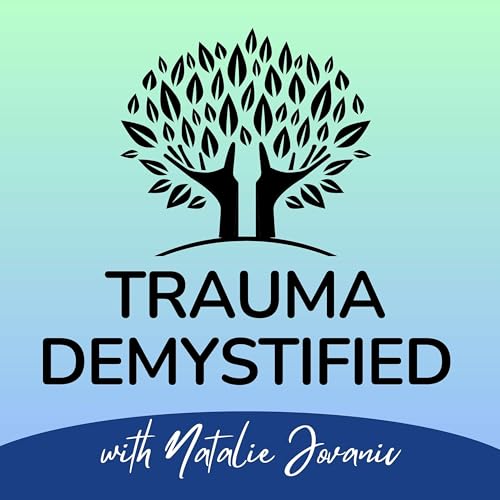Send us a text
What makes complex trauma different from single-incident trauma—and why does recovery require a different approach? In this episode, I break down the nature of complex trauma, explore its lasting impacts on your nervous system and relationships, and share the experiential, holistic healing approaches that actually work for deep, lasting transformation.
What You'll Learn
- The key difference between single-incident trauma and complex trauma—and why understanding this matters for your recovery
- Common causes of complex trauma: childhood abuse, dysfunctional families, domestic violence, systemic oppression, and more
- Why Western psychology's medical model often stigmatizes and pathologizes complex trauma—and how to resist internalizing this harm
- The wide range of complex trauma symptoms: emotional dysregulation, trust issues, hypervigilance, dissociation, chronic pain, and more—and why they're intelligent survival strategies, not signs you're broken
- Core principles for healing: starting where you are, knowing your why, treating recovery as a hero's journey, and working toward inner attunement
- How to improve emotional regulation, get to know your different parts (including attachment-wounded and trauma-response parts), and increase your safety
- Why complex trauma recovery needs individualized, experiential approaches like parts work therapy, EMDR, somatic practices, and systemic constellations
- How to find an appropriate trauma counsellor who can foster healthy relationships, navigate power dynamics, and support co-regulation
- Common challenges and myths: avoidant parts, healing fatigue, and the lie that willpower alone can heal trauma
Who This Is For
This episode is for adults recovering from complex trauma—including childhood abuse, prolonged domestic violence, systemic oppression, or other ongoing traumatic environments—who want to understand the deeper nature of their experiences and find effective, holistic healing approaches. It's also for anyone who has internalized stigma, struggled to find appropriate professional support, or feels frustrated by one-size-fits-all treatment approaches that don't honor the complexity of their journey.
Other Resources
Parts Work Therapy to Heal Trauma: https://brighthorizontherapies.com/blog/parts-work-therapy-benefits-healing-trauma/
What is the Difference between Trauma and Complex Trauma: https://brighthorizontherapies.com/blog/what-is-the-difference-between-trauma-and-complex-trauma/
If you’d like to explore more, here are some ways to connect:
- Discover more about my work: https://brighthorizontherapies.com/
- Follow along on Instagram: https://www.instagram.com/brighthorizontherapies/
- Send me a message: nat@brighthorizontherapies.com
Trauma Demystified is not intended to replace professional guidance, support, medical treatment, or therapy. Please feel free to consult your physician or a mental health professional for any questions about mental health symptoms.
Bright Horizon Therapies is located in the Treaty 7 region in Southern Alberta, which includes the Blackfoot Confederacy, the Tsuut’ina First Nation, and the Stoney Nakoda. This land is also home to Métis Nation of Alberta, Region III. I acknowledge the traditional caregivers of the land and the importance of a commitment to the continued decolonization of my work.
 40 分
40 分 29 分
29 分 2025/05/1535 分
2025/05/1535 分 2025/03/2937 分
2025/03/2937 分 32 分
32 分 2024/12/0837 分
2024/12/0837 分 28 分
28 分 2024/08/2234 分
2024/08/2234 分
